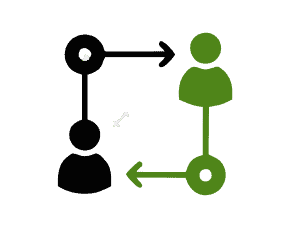What is effective facilitation?

What is effective facilitation?
Facilitation is the process of guiding a group through a discussion or activity to achieve a specific objective. It involves creating an inclusive and collaborative environment where all participants feel comfortable expressing their ideas. Effective facilitation is crucial for engaging participants and fostering meaningful and purpose-oriented conversations.
Facilitation is an art that involves creating an environment where every participant feels valued and contributes actively. By mastering facilitation techniques, one can enhance group dynamics and achieve more meaningful outcomes.
Key elements of effective facilitation

Active
listening
Listen to participants with the intent of understanding their perspectives.
Use verbal and non-verbal cues to show attentiveness, such as nodding, summarising, and asking clarifying questions.

Neutral
positioning
Remain neutral and unbiased, allowing diverse viewpoints to be explored.
Avoid expressing personal opinions or favouring one perspective over another.

Clarity of
purpose
Clearly communicate the objectives and goals of the discussion or activity.
Help participants understand the purpose and expected outcomes.

Creating a
safe space
Establish a safe and non-judgmental environment where participants feel comfortable sharing their thoughts.
Encourage openness and respect for diverse opinions.

Effective Communication
Use clear and concise language.
Encourage participants to express themselves openly and respectfully.
Techniques for Facilitating Participation
Brainstorming
Open ended questions
Visual aids
Small Group Discussions
Role plays
Other facilitation tips

Traffic cop
Manage participation within the group.
- Gently call out the silent ones “we have not heard from you yet. Would you like to share a perspective on this topic?
- Respectfully ‘pull the microphone’ away from the ones monopolising the conversation: “I know you have a really important point to make on this, I just want to make sure we also hear from some of the others. Will come back to you in a minute.”

Silence is golden
When inviting participants into a brainstorming session or to respond to a question, ask them to do some thinking for 2-3 minutes in silence first.
This levels the playing field a little between the extroverts and introverts in the group. Otherwise, the extroverts will dominate the conversations while the introverts are busy listening.

T-junction
The “T junction is a focusing technique that ends endless unstructured debates and produces a better quality decision. Set up a “T” for the issue and then have the group brainstorm the pros and cons and often the preferred choice will simply stand out with little need for further discussion.

Parking lot
The parking lot is a place for issues or ideas that may not be directly related to the discussion. The issues are parked temporarily to prevent unnecessary discussion or the waste of the groups time but because it is placed in the parking lot, people do feel that their opinion were acknowiedge at the it will be addressed later. At the end of the workshop, the group returns to the parking lot to resolve all the issues by either deciding to add or remove it from the agenda.

Flip charting with flair
The use of flipcharts and post-it pads during a workshop ensures that everyone is having a hands-on experience. Both their minds and bodies are engaged and the benefits includes that participants begin to internalise the work and this leads to greater ownership of implementation. Flipchart tricks:
|


